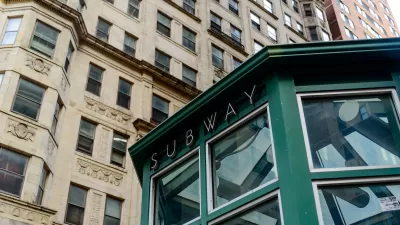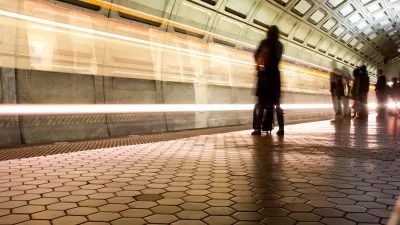Major sporting events like the Olympics and the Super Bowl can serve as catalysts for major changes in transportation infrastructure and accessibility.

The city of New Orleans is turning its focus to making the entire city more walkable and accessible in preparation for hosting the Super Bowl in February, reports Patrick Sisson in an article in Fast Company.
The city, state, and local business groups are managing approximately 550 infrastructure projects, said Michael Hecht, CEO of Greater New Orleans, the local economic development organization. Altogether, roughly two dozen organizations aim to do approximately $60 million of work in the next five months, which include upgrading sidewalks, roads, and rights of way.
While the historic city evokes images of picturesque streets mobbed with pedestrians and vibrant storefronts, the city’s infrastructure can pose serious mobility challenges for people with mobility impairments. “It’s also difficult to update, since there are so many historic preservation requirements to use cobblestones or other traditional paving materials.”
Just three of the city’s 54 historic streetcars are ADA compliant, Sisson adds. A $5.5 million federal grant to study potential accessibility improvements could change that.
For New Orleans, the Super Bowl could be a catalyst for durable improvements. According to Michael Hecht, CEO of economic development organization Greater New Orleans, “The Super Bowl effort is serving as a forcing function to help us modernize New Orleans, and in that sense, it’s going to be very productive for us.”
FULL STORY: How New Orleans is using the Super Bowl to make the entire city more accessible

Study: Maui’s Plan to Convert Vacation Rentals to Long-Term Housing Could Cause Nearly $1 Billion Economic Loss
The plan would reduce visitor accommodation by 25,% resulting in 1,900 jobs lost.

North Texas Transit Leaders Tout Benefits of TOD for Growing Region
At a summit focused on transit-oriented development, policymakers discussed how North Texas’ expanded light rail system can serve as a tool for economic growth.

Why Should We Subsidize Public Transportation?
Many public transit agencies face financial stress due to rising costs, declining fare revenue, and declining subsidies. Transit advocates must provide a strong business case for increasing public transit funding.

How to Make US Trains Faster
Changes to boarding platforms and a switch to electric trains could improve U.S. passenger rail service without the added cost of high-speed rail.

Columbia’s Revitalized ‘Loop’ Is a Hub for Local Entrepreneurs
A focus on small businesses is helping a commercial corridor in Columbia, Missouri thrive.

Invasive Insect Threatens Minnesota’s Ash Forests
The Emerald Ash Borer is a rapidly spreading invasive pest threatening Minnesota’s ash trees, and homeowners are encouraged to plant diverse replacement species, avoid moving ash firewood, and monitor for signs of infestation.
Urban Design for Planners 1: Software Tools
This six-course series explores essential urban design concepts using open source software and equips planners with the tools they need to participate fully in the urban design process.
Planning for Universal Design
Learn the tools for implementing Universal Design in planning regulations.
Ascent Environmental
Borough of Carlisle
Institute for Housing and Urban Development Studies (IHS)
City of Grandview
Harvard GSD Executive Education
Toledo-Lucas County Plan Commissions
Salt Lake City
NYU Wagner Graduate School of Public Service





























